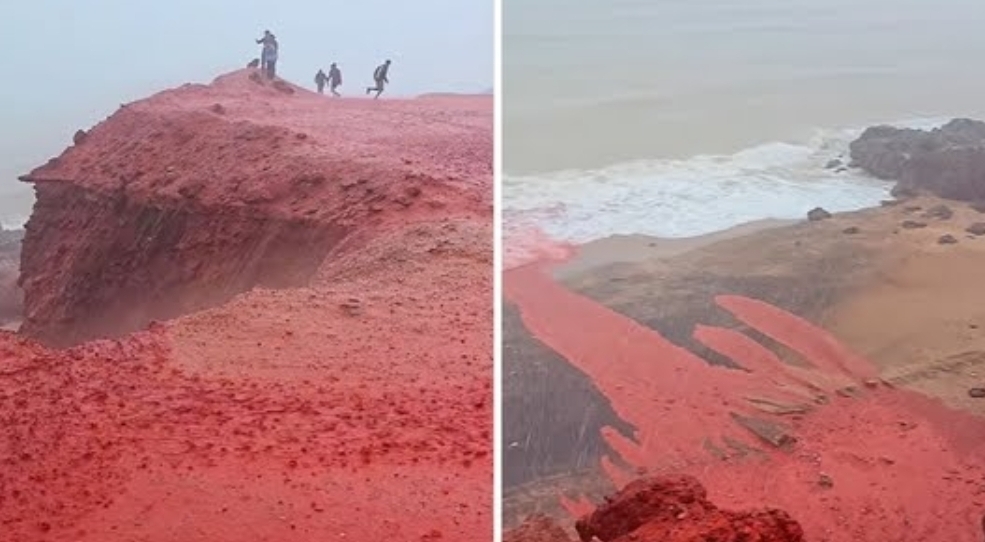Table of Contents
The breathtaking spectacle of “blood rain” has captured the attention of nature enthusiasts and tourists alike, transforming the shores of Hormuz Island in Iran into a mesmerizing display of crimson hues. This rare phenomenon, which occurs under specific climatic and geological conditions, not only offers a unique visual treat but also highlights the fascinating interplay between nature and mineralogy.

What is Blood Rain?
Blood rain refers to a meteorological phenomenon where rainwater appears red, typically due to the presence of iron oxide or other mineral content in the soil. This occurrence has been particularly noted on Hormuz Island, where the combination of heavy rainfall and the island’s distinctive red soil creates striking visual effects.
How Does It Happen?
- Heavy Rainfall: The phenomenon usually occurs during intense rainstorms. As rain pours down, it erodes the iron-rich soil on the island’s mountains.
- Iron Oxide Interaction: The rainwater mixes with the soil, causing the dissolved iron oxide to wash into the ocean. This results in the water taking on a vivid red color, especially noticeable in coastal areas.
- Seasonal Occurrence: While blood rain can happen throughout the year, it is considered a rare occurrence due to the specific mineral content required to produce the striking red color.
The Beauty of Hormuz Island
Hormuz Island, often referred to as the “Rainbow Island,” boasts a diverse geological makeup with over 70 different minerals. These minerals contribute to the island’s vibrant landscapes, featuring not only red soil but also layers of yellow, orange, and other hues. The mineral-rich earth is not just a visual marvel; it also has significant economic value, being utilized in industries such as dyeing, cosmetics, and ceramics.
Unique Geological Features
- Colorful Strata: The soil’s vivid colors arise from interactions between various rock layers, including clay, carbonates, and iron-rich volcanic rocks.
- Scenic Beaches: The island’s unique beaches, especially the Silver and Red beach, offer stunning views, particularly at sunrise and sunset when the colors are most vibrant.
- Metallic Sand: Walking along the shores, visitors may notice glittering sand, enhanced by metal compounds, adding to the island’s enchanting allure.
Tourism and Cultural Significance
The blood rain phenomenon has sparked significant interest in Hormuz Island as a tourist destination. Tourists are drawn not only by the visual spectacle but also by the opportunity to explore the island’s rich cultural heritage. The Iranian tourism board highlights the importance of this natural wonder, encouraging visitors to experience the surreal beauty firsthand.
Visiting Hormuz Island
For those planning a visit, Hormuz Island offers various activities, including:
- Photography: Capture the stunning landscapes, especially during the blood rain phenomenon.
- Nature Trails: Explore the island’s geological formations and diverse ecosystems.
- Cultural Experiences: Engage with the local community and learn about the island’s history and traditions.
The blood rain phenomenon on Hormuz Island is more than just a natural spectacle; it is a testament to the intricate connections between weather patterns and geological features. As this captivating event continues to attract attention, it serves as a reminder of nature’s beauty and complexity. Whether you’re a nature lover, a photographer, or simply seeking a unique travel experience, Hormuz Island promises an unforgettable adventure.




